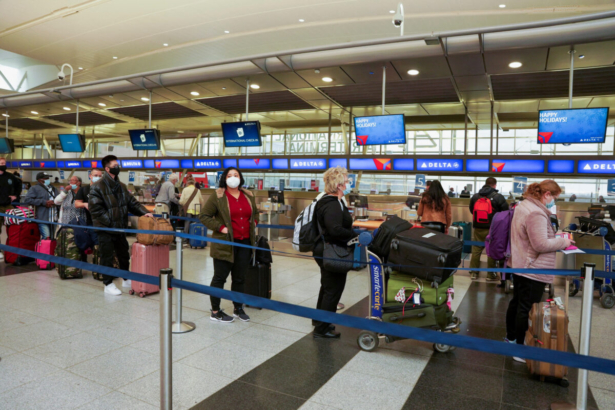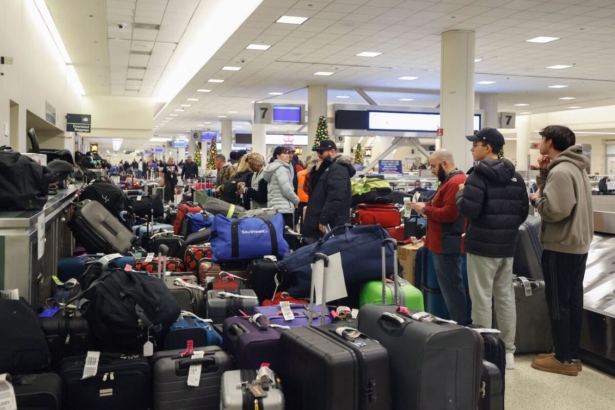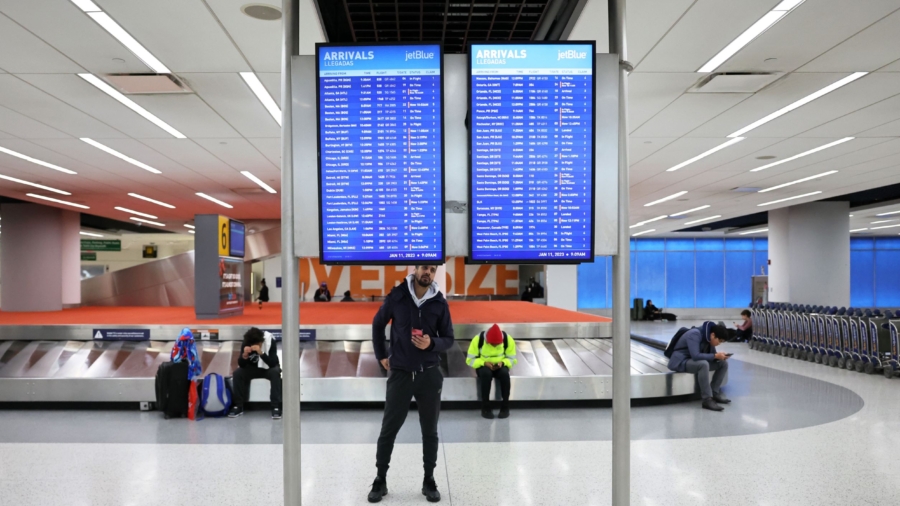A power outage at John F. Kennedy International (JFK) Airport’s Terminal 1 that prompted a small fire will continue to plague passengers on Feb. 17 after the terminal was shut down, airport officials have said.
The outage at Terminal 1 was caused by an electrical panel failure that resulted in a “small isolated fire overnight that was immediately extinguished,” the airport said on Twitter on Feb. 16.
According to JFK, the outage is impacting the terminal’s ability to accept inbound and outbound flights and officials are using other terminals to accommodate the affected flights.
Airport officials are asking passengers to check their flight status with their airline before heading to the airport.
It is not clear exactly how many flights were affected by the outage on Thursday, although data from FlightAware reports show there were 102 delays and 24 cancellations at JFK that day.
As of the early hours of Friday, there have been 21 delays and 29 cancellations at the airport, according to the data.

Flights Diverted
Some flights that were set to arrive at the airport terminal on Thursday had to be diverted to other airports in Boston, Newark, and Washington, D.C., according to data shared on the airport’s website.
One flight that was traveling to the airport from New Zealand had to return to Auckland after being in the air for eight hours, according to reports.
An Air New Zealand flight that was already eight hours into its flight to JFK had to make a U-turn and return to New Zealand.
However, in an updated post on Twitter just before midnight on Thursday, JFK said the terminal would remain closed on Friday due to the electrical issues, adding that the Port Authority “continues working with the terminal’s operator to restore flight operations as quickly as possible.”
The New York City Fire Department said it had responded to a small paint can fire in a utility room at the airport at 3 a.m., CBS News reported.
The latest power outage comes just one day after the head of the Federal Aviation Administration (FAA), Billy Nolen, said his agency has taken steps to ensure that there will not be a repeat of the technical failure in January that affected more than 12,000 domestic flights, for several hours and led to nation-wide delays and cancellations.

Holiday Travel Chaos
That meltdown was due to the agency’s Notice To Air Missions (NOTAM) system failing for the first time in history on Jan. 11, according to the FAA.
In a statement on Feb. 15, Nolan said that the agency has implemented a string of new protocols, including a continued upgrade of the NOTAM system, which alerts crews about potential hazards along a flight route, airport infrastructure, and flying conditions among other safety issues, adding that he expects a “significant portion of the modernization work” to be completed by the middle of 2025.
“We are experiencing the safest period in aviation history, but we do not take that for granted,” Noland said. “Recent events remind us that we cannot become complacent and that we must continually invest in our aviation system.”
Prior to January’s travel chaos, there were widespread travel disruptions during the key holiday period following issues with outdated flight scheduling software technology at Southwest Airlines.
At times, the cancellations totaled 60 percent of the airline’s daily schedule and are estimated to have lost the Dallas-based carrier around $825 million, almost half of which comes from lost revenue and much comes from reimbursements to passengers.
The Department of Transportation is currently investigating whether Southwest executives broke the law when they knowingly offered “unrealistic scheduling of flights” which is “considered an unfair and deceptive practice.”
From The Epoch Times

